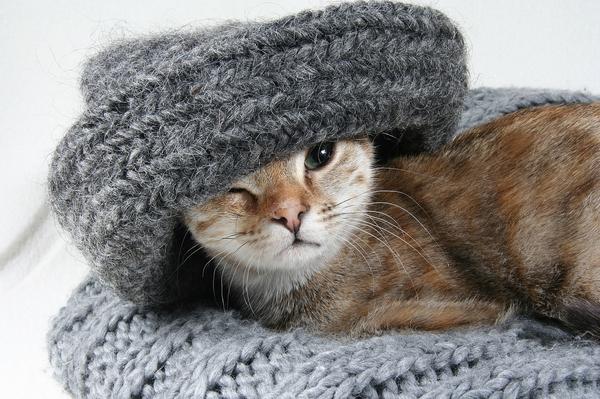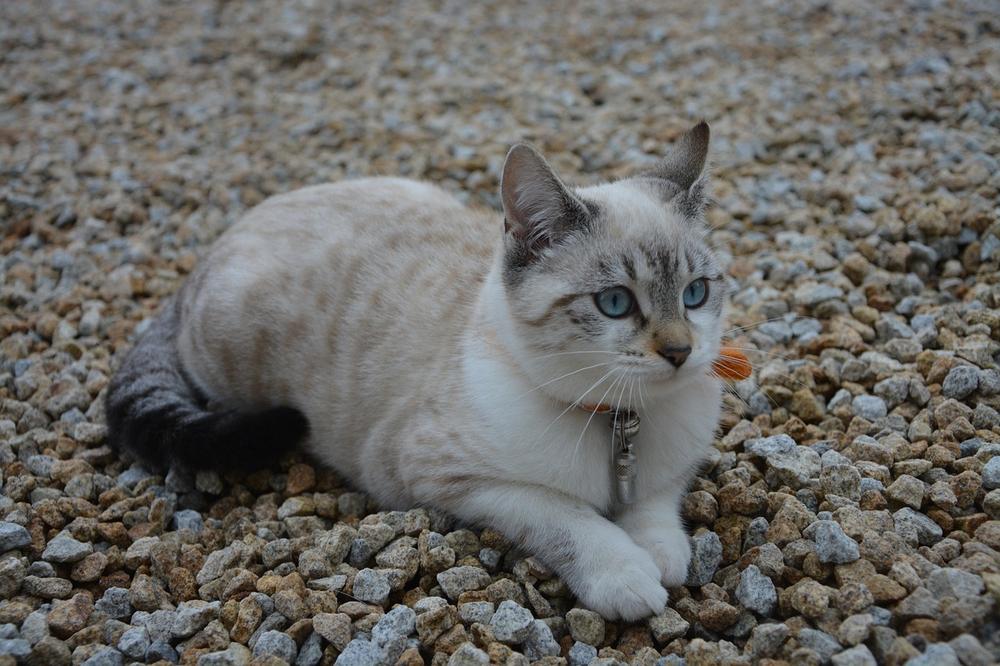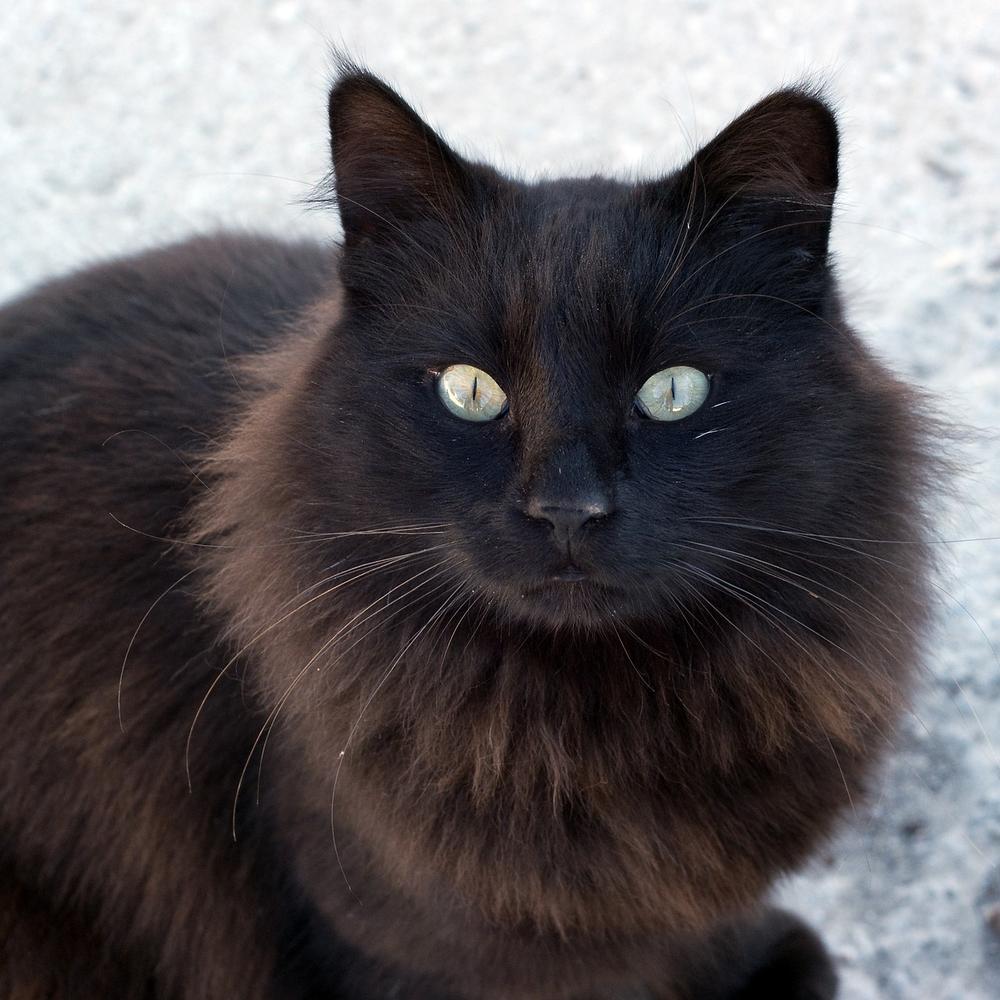Do Cats Have Kittens in Winter?

Can I be honest with you?
Here's the thing - winter may be cute and cozy for us, but for our furry friends, it can be a nightmare.
Picture this:
Freezing temperatures, icy winds, and a pregnant cat shivering alone in the cold.
The thought alone is enough to make your heart ache. 😢
But what if I tell you there's a way to ensure the well-being of cats in winter?
In today's guide, I'll reveal the answers you've been desperately seeking.
So, let's put an end to this concern once and for all.
Ready to take action?
Let's dive in!
The Natural Breeding Cycle of Cats
If you want to be a good cat owner, you need to know how cats reproduce.

So here's the breakdown for you:
- Female cats have three stages in their heat cycle: proestrus, estrus, and diestrus.
- Cats only mate during certain times of the year because they are seasonal breeders and avoid colder months.
- The "kitten season" for cats is from late March to mid-October, with peak months being February through March and May.
- Don't expect kittens during winter, it's rare for female cats to cycle then.
- After mating, female cats give birth about sixty days later.
- Here's an interesting fact: female cats can start breeding as early as four months old, so it's important to spay or neuter them early.
- On average, cats have litters of 4-8 kittens, so get ready for some cuteness overload!
- Fun fact: female cats can get pregnant multiple times in a year, so more kittens can come your way!
- Around three weeks after mating, behavioral changes occur indicating that birth is near. Keep an eye out for these signs.
- During their heat cycles, female cats may meow loudly and show receptive postures for mating. It's just nature doing its thing.
Cats are truly captivating, and knowing their breeding cycle is crucial for their all in all health and happiness.
Main points I'll expand upon further down this article:
- Cats giving birth in winter can expose newborn kittens to extreme weather conditions and increase the risk of hypothermia and frostbite.
- The impact of global warming may lead to an increased cat population and the ability for them to give birth in any season.
- Cats require more than 12 hours of sunlight to go into heat, making it difficult for them to breed during winter when days are shorter.
- Female cats go through a dormant period called anestrus during winter, highlighting the importance of spaying or neutering them to prevent unwanted litters.
- Stray cats in winter tend to seek sheltered areas for warmth, resulting in fewer chances to come across and bring them to shelters.
- Cat adoptions tend to happen more quickly from late fall through early spring.
- Artificial methods and man-made machines can provide warmth for newborn kittens during winter, helping them survive until they grow up.
- It is recommended to adopt or foster kittens from local shelters instead of pet shops to prevent overpopulation.
- Spaying and neutering cats is vital to control the cat population, as approximately 6.5 million kittens enter U.S. shelters annually.
- Programs like Community Cats aim to reduce stray and feral cat populations through accessible spay/neuter services and public shelter locations.
For all you cat owners out there, have you ever wondered what happens when cats breed in winter?
Well, let me tell you...
The Impact of Temperature and Climate on Cat Reproduction
Temperature and climate can affect cat reproduction, with extreme cold temperatures reducing male cats' fertility. Kittens born in winter face vulnerability to harsh elements, but climate change could lead to more winter pregnancies. Cats in warm regions like California already have year-round kitten seasons.
Can cats have kittens in the winter?
Let's get straight to the point.
Extreme cold temperatures can seriously affect male cats' fertility, lowering their sperm count. This demonstrates how temperature and climate can impact cat reproduction.
During the winter months, newborn kittens face particular vulnerability to the harsh elements.
That's why it's crucial for cats to avoid giving birth during this season.
We don't want those adorable little furballs suffering from hypothermia or frostbite!
But here's the thing - thanks to global warming and changing weather patterns, we're witnessing more cases of cats getting pregnant in the winter. These courageous mama cats have the challenge of protecting their babies from the bitter cold.
It's no easy task, and unfortunately, these kittens are at a higher risk of not making it.

This highlights the potential consequences of climate change on our furry friends.
As the ice caps melt and seasons become unpredictable, cats may find themselves becoming parents at unexpected times. Who would've imagined that?
However, let's look ahead.
If global warming continues unabated, we might actually see an increase in the cat population - with cats giving birth all year round.
Just imagine that!
In certain regions like California with warm climates, they already experience kitten seasons twice a year. Thanks to their perpetually sunny weather, cats there can cycle from spring through fall.
On the other hand, colder locations tend to stick to the traditional pattern of giving birth mainly in the spring and summer months.
So, as you can see, kittens being born in the winter is not the norm.
But with Mother Nature stirring things up, who knows?
The world of cat reproduction could be turned upside down (hopefully for the better).
The Influence of Daylight Duration on Feline Reproductive Patterns
| Daylight Duration | Feline Reproductive Patterns |
|---|---|
| Shorter duration | Decreased likelihood of cats going into heat during winter |
| Longer duration | Increased likelihood of cats going into heat during breeding season |
| Seasonal changes | Cats tend to have fewer litters during winter |
| Temperature | Works in conjunction with daylight duration to influence feline breeding season |
| Expert advice | Consult a veterinarian for more information on feline reproductive patterns in winter |
Cats need more than 12 hours of sunlight to go into heat, which can be challenging during winter when days are shorter.
The length of daylight affects their heat cycles, with over 12 hours needed to initiate the cycle.
Cats require around 12 hours of daylight to trigger a heat cycle, but in winter, when nights are long and light is scarce, they typically don't go into heat.
It's logical, right?
Just like us, cats feel cozy and relaxed in winter too.
They're just chilling with the peaceful winter vibes.
But now things get interesting.
When the weather gets warmer, female cats start going into heat.
Ah, springtime - the season for love.
The sleep hormone melatonin, released when there's no light, helps maintain their sleep-wake cycle.

So, cats are very sensitive to light changes.
Daylight and temperature affect their breeding season.
When these factors align perfectly, love is in the air.
Remember though, each individual cat may respond slightly differently to light and temperature changes.
We cats are unique and special, just like snowflakes.
Although cats can technically have kittens in winter, they're more likely to expand their feline family tree during the warmer months.
And hey, indoor cats don't really care about seasons, do they?
Every day feels sunny indoors!
Stay tuned for more fascinating insights into the world of cats. Because let's admit it, cats are simply purr-fect, no matter the season!
And guess what? If you've been wondering about the outcome of cat mating, I've written an informative guide for you! Learn how to determine if cat mating was successful in my article, How to Tell if Cat Mating Was Successful.
Trust me, it's a must-read if you're curious about this topic.
Don't miss out on the valuable insights I've shared!
The Availability of Food and Resources During the Winter Season
Winter brings challenges for stray cats
Ah, winter. The season of hot chocolate, cozy blankets, and warm fires.
But let's think about those poor stray cats who don't have a warm home like you do.
It's tough for them during winter in places like Oklahoma. Finding food becomes really hard when everything is covered in snow and people stay inside.
And it's not just the cats that struggle; pregnant cats face even bigger difficulties.
Pregnant cats need extra support during winter
During winter, finding enough food is super important for our furry friends.
Pregnant cats specifically need good nutrition to have healthy pregnancies.
But with limited resources available, they may not be getting the right amount of food.
This can cause health problems for both the expectant mom cat and her kittens.
Also, there aren't many shelters around, so these cats have a hard time finding warmth and protection from winter storms.

Their chances of surviving are pretty slim.
Adoptions tend to happen more in winter
Interestingly, more people choose to adopt cats in winter.
Maybe it's because they feel good bringing a cold, homeless cat into their loving homes. Whatever the reason, animal shelters say adoption rates increase from late fall through early spring.
However, since people spend less time outside during winter, they have fewer opportunities to find strays and bring them to safety.
This makes it even harder for these cats to find shelter and a caring family.
To sum it up, winter is really tough for stray cats. While we enjoy the comforts of our cozy homes, please remember those feline friends out there facing the elements.
And here's the deal...
Did you know that winter doesn't only affect food availability for cats, but it also plays a role in their reproductive cycles?
Melatonin, a hormone associated with seasonal rhythm regulation, has an impact on feline fertility.
So, what does this mean for our furry friends?
Let's dive into the fascinating realm of cat reproduction and discover the effects of winter on their ability to have kittens.
The Significance of Feline Hormonal Changes in Relation to Winter Breeding
Melatonin, the hormone that regulates seasonal rhythms, plays a crucial role in controlling the reproductive cycles of female cats.
During winter, these feline ladies go through a period called anestrus, where they become dormant and inactive.
To control unwanted litters and prevent undesirable behaviors like spraying, it is vital to spay or neuter your furry friend.
Not only does this save you from the troubles of dealing with unexpected kittens, but it also ensures a cat-friendly environment for everyone involved.
The Impact of Human Intervention on Cat Reproductive Cycles in Winter
Understanding the ethical implications of artificially inducing heat cycles in cats during winter is important for their all in all well-being.
To help newborn kittens survive in animal shelters, we use artificial methods and machines to keep them warm.
This is particularly crucial as animal shelters are overwhelmed with unwanted kittens - around 6.5 million enter U.S. shelters each year...
To prevent overpopulation, it's better to adopt or foster kittens from local shelters rather than buying them from pet shops.
Additionally, if you don't plan on breeding your female cat, it's best to have her spayed by five months old.
Given that there are already more cats than good homes, spaying and neutering is extremely important. Female cats in heat may display attention-seeking and vocal behaviors, making it even more urgent to have them spayed.
Programs like Community Cats aim to reduce stray and feral cat populations by offering accessible spay/neuter services and public shelter locations.
Moreover, spending time with a loving cat can release happy chemicals and positively impact your mood.
By implementing these measures, we can effectively manage cat reproductive cycles in winter and prioritize the well-being of our furry friends.
And that wraps up today's article.
Just a quick question before you head out: Did my blog post help you out? If it did, I would be super grateful if you could share it with your loved ones. You can easily spread the word by clicking on any of the social media sharing icons. Thank you so much!
Talk soon,
-Sarah Davis